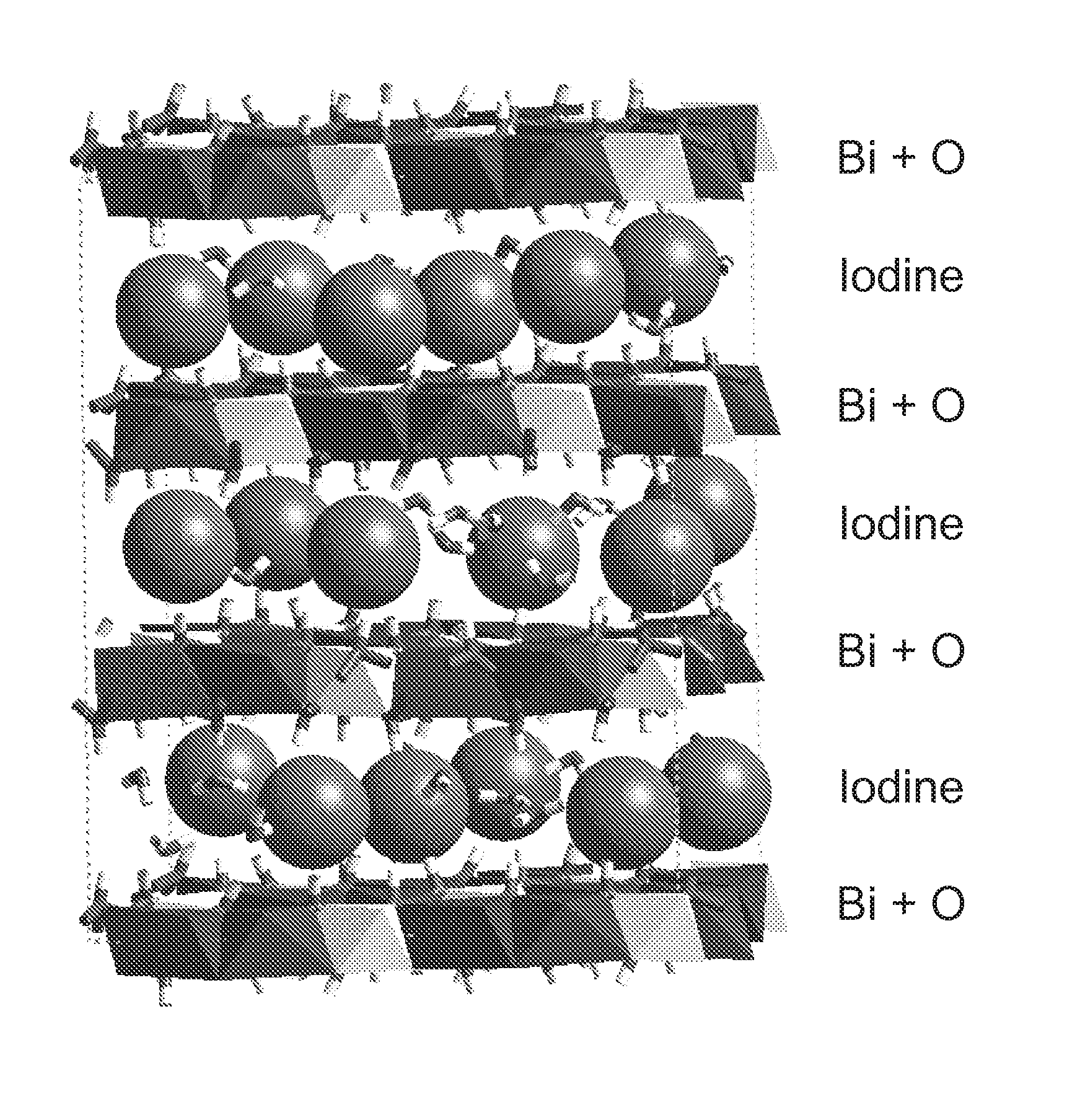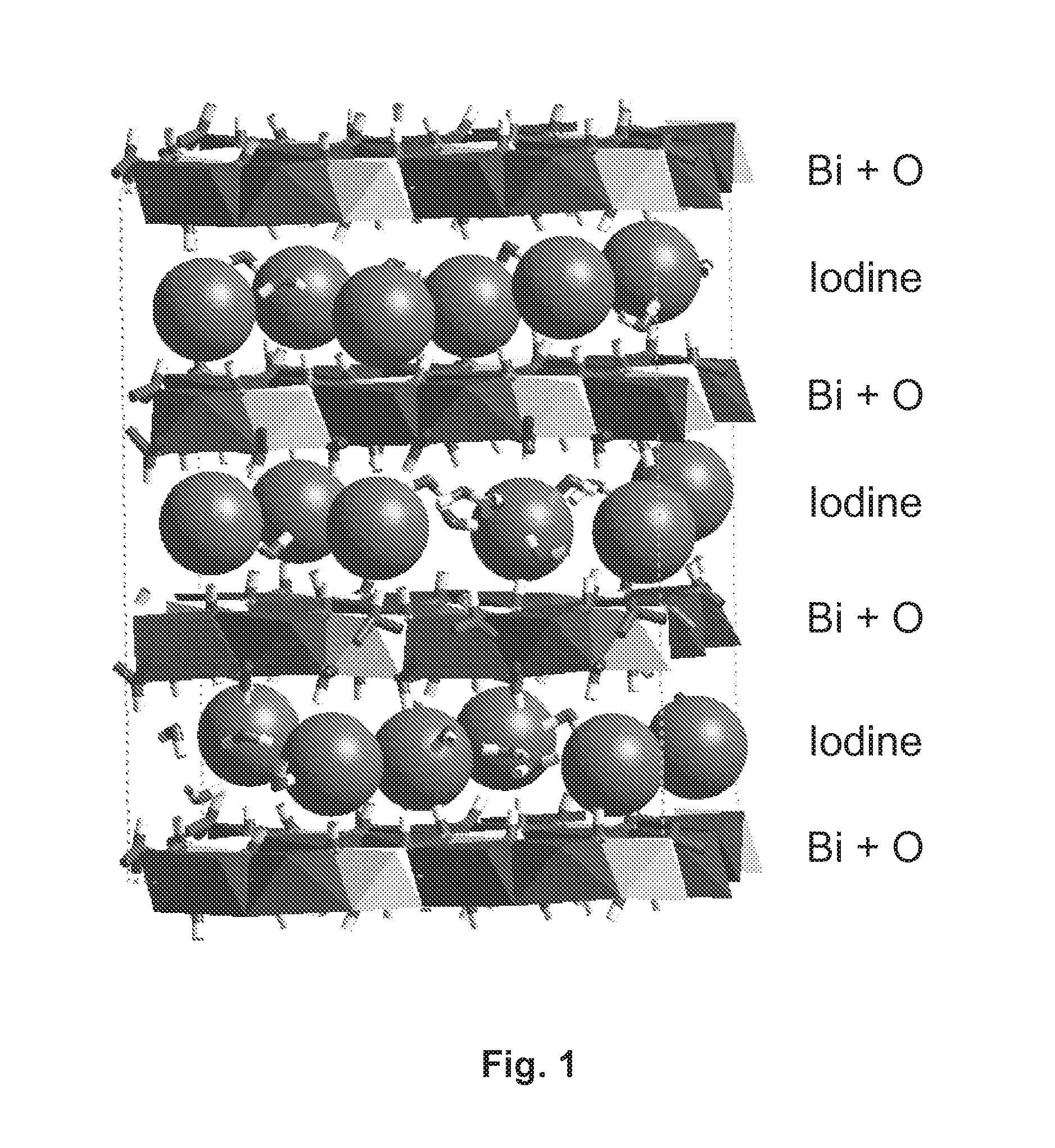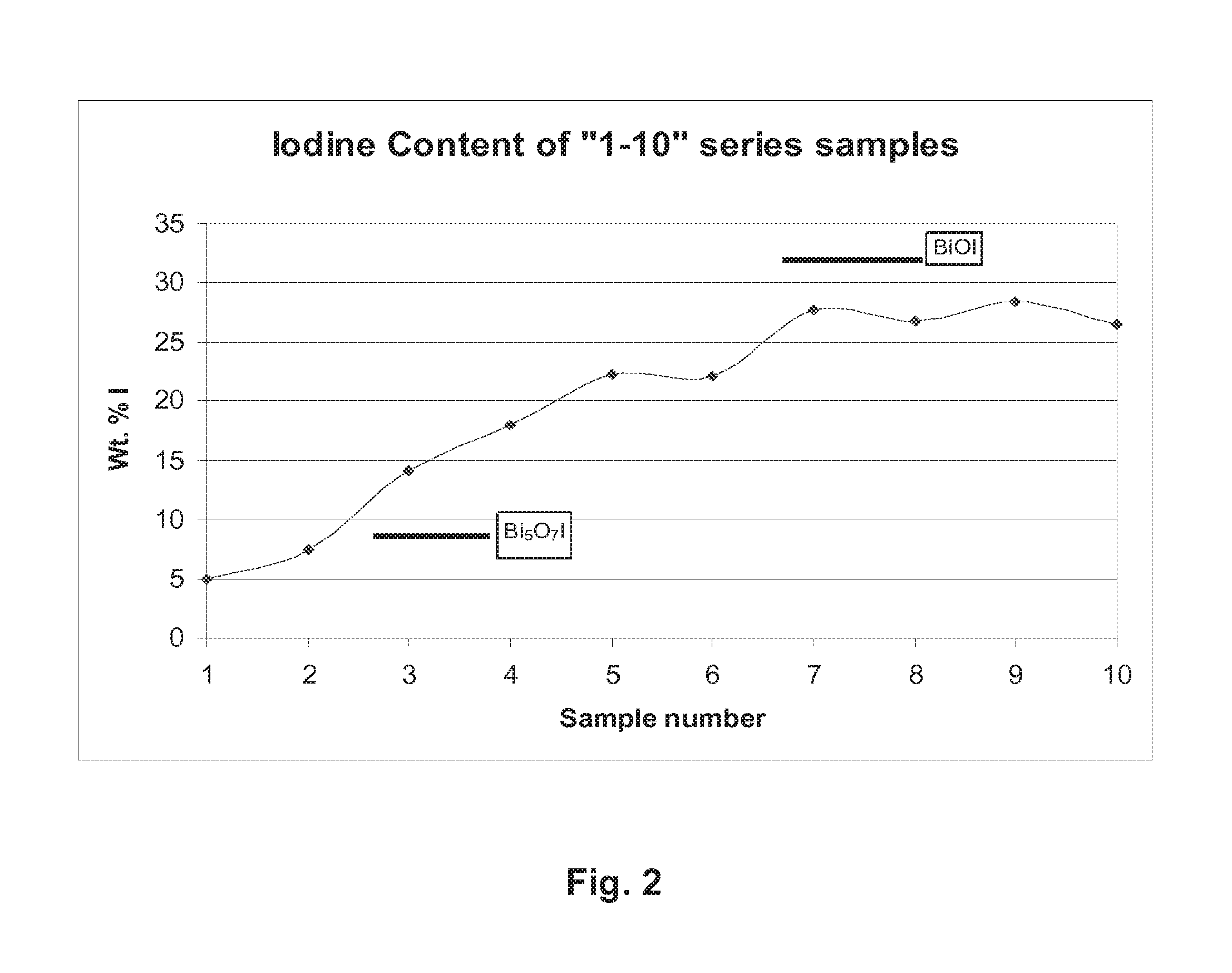Mixed-layered bismuth—oxygen—iodine materials for capture and waste disposal of radioactive iodine
a technology of radioactive iodine and materials, which is applied in the direction of other chemical processes, separation processes, conductors, etc., to achieve the effects of low solubility, high iodine weight percentage, and optimized iodine uptake and degr
- Summary
- Abstract
- Description
- Claims
- Application Information
AI Technical Summary
Benefits of technology
Problems solved by technology
Method used
Image
Examples
Embodiment Construction
[0026]The general term “bismuth oxy-iodine compounds” is broadly defined herein to include both the iodide (I−) and iodate (IO3−) forms of iodine. The term “mixed-layered Bi—O—I materials” and “mixed-layered bismuth oxy-iodine materials” are interchangeable.
[0027]Our novel technology generally involves the in-situ crystallization of layered bismuth oxide compounds (See FIG. 1) with aqueous dissolved iodine (which resides as both iodide and iodate in solution). Although individual bismuth oxy-iodide compounds (e.g., BiOI) have already been described in the context of capturing radioiodine, our unique contribution is the unexpected discovery that there are mixed-layered Bi—O—I materials, not described in the prior work, which optimize both the uptake of iodine and the degree of insolubility (and un-leachability) of iodine. When optimized, these mixed-layered Bi—O—I materials are durable materials that are especially suitable as a waste forms for repository conditions, such as are pred...
PUM
| Property | Measurement | Unit |
|---|---|---|
| temperature | aaaaa | aaaaa |
| molar ratio | aaaaa | aaaaa |
| molar ratio | aaaaa | aaaaa |
Abstract
Description
Claims
Application Information
 Login to View More
Login to View More - R&D
- Intellectual Property
- Life Sciences
- Materials
- Tech Scout
- Unparalleled Data Quality
- Higher Quality Content
- 60% Fewer Hallucinations
Browse by: Latest US Patents, China's latest patents, Technical Efficacy Thesaurus, Application Domain, Technology Topic, Popular Technical Reports.
© 2025 PatSnap. All rights reserved.Legal|Privacy policy|Modern Slavery Act Transparency Statement|Sitemap|About US| Contact US: help@patsnap.com



